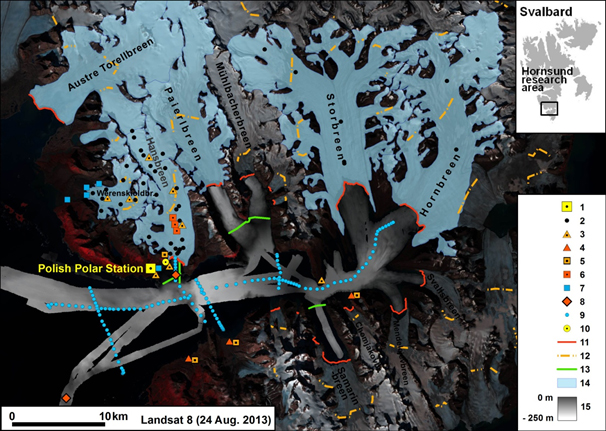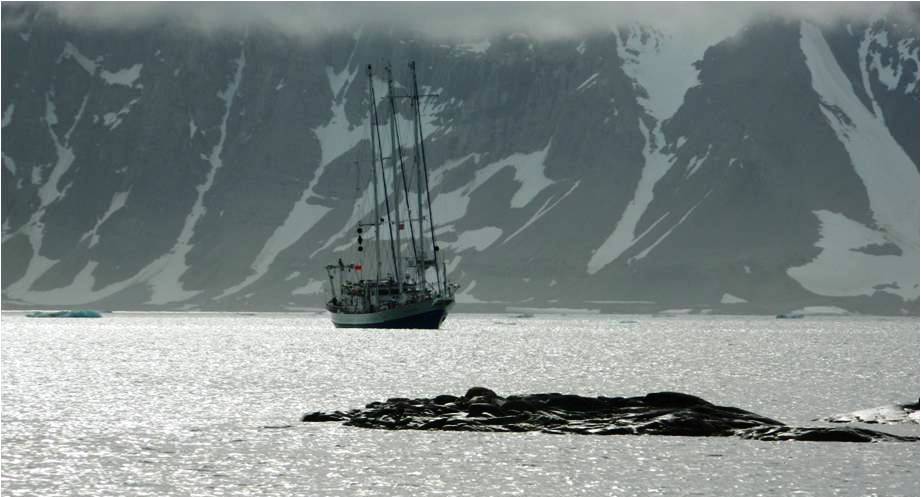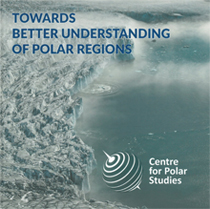 Fig. 2. Main components of the unique Arctic field laboratory ‘Hornsund’ (Maps by M. Błaszczyk):
Fig. 2. Main components of the unique Arctic field laboratory ‘Hornsund’ (Maps by M. Błaszczyk):
1 – Polish Polar Station (S. Siedlecki Station, working continuously since 1978);
2 – measuring points for glacier characteristics (stakes for monitoring mass balance, ice motion and snow cover properties), on Hansbreen since 1989;
3 – multiple-measurement automatic weather stations, working all year long;
4 – simple automatic weather stations (Hobo), working all year long;
5 – automatic, year-long time-lapse cameras;
6 – monitoring stations for subglacial water pressure, basal sliding and thermal state of the glacier (co-operation with the University of British Columbia);
7 – rivers and subglacial outflows monitored;
8 – constant temperature and dissolved solute monitoring stations (CTD) in a vertical sea water profile (moorings);
9 – annually repeated CTD profiling on research vessel (R/V) Oceania;
10 – short-term fluctuations of Hansbreen’s cliff extent monitoring station (a laser rangefinder and a panoramic radar);
11 – tidewater glacier fronts in a satellite monitoring scheme (since 2000);
12 – mean interannual ELA (equilibrium line altitude);
13 – salinity and flow measurements acoustic soundings;
14 – glaciers with bed topography and internal structure surveyed with ground-penetrating radar (in international co-operation).
The map is based on the satellite image of Landsat 8 and fiord bathymetry mapping (measured by the employees of the members of Centre for Polar Studies).
Oceania
The Institute of Oceanology Polish Academy of Sciences is the owner and operator of the sailing research vessel r/v Oceania. Most of the research carried out in the Baltic and the European Arctic by IO PAN’s staff has been done on board the Oceania. The Oceania is the only Polish research vessel adapted for a wide range of oceanographic research activities in physics, chemistry, ecology and marine biology in waters all round the world. She is equipped with modern laboratories, state-of-art apparatus, and the means to perform oceanographic measurements down to a depth of 5000 m. These facilities are up to date.
Every year Oceania spends some 250 days at sea, including around 80 days in the North Sea and the Spitsbergen region (June – August). The ship also sails on more than a dozen cruises on the Baltic Sea expeditions. These voyages are connected with a great deal of the Institute’s research and also international programmes in which the Institute is involved.
More information at: http://iopan.gda.pl/oceania.html






